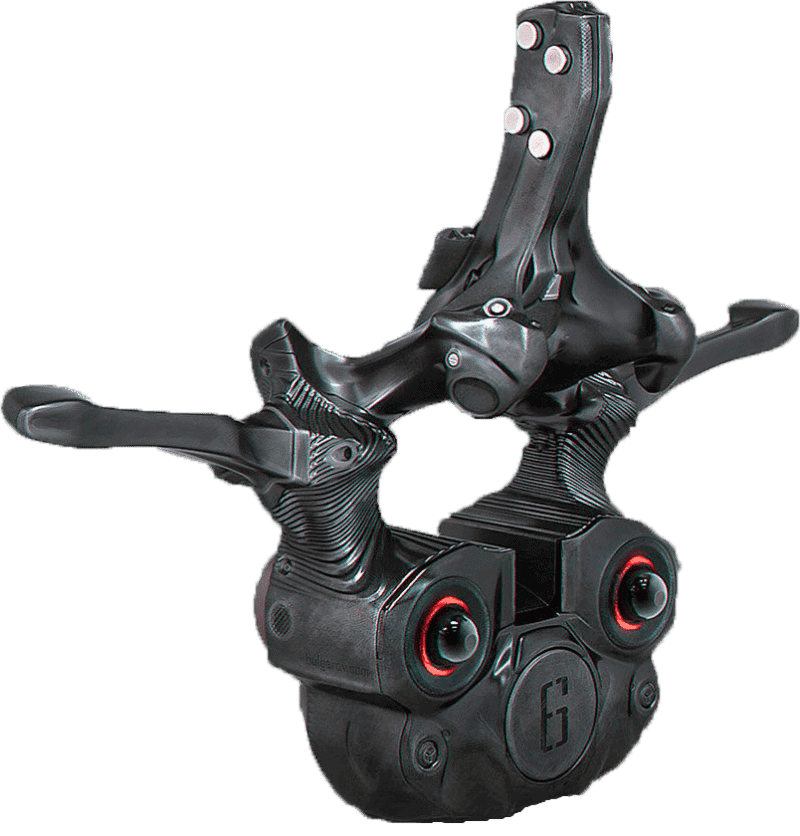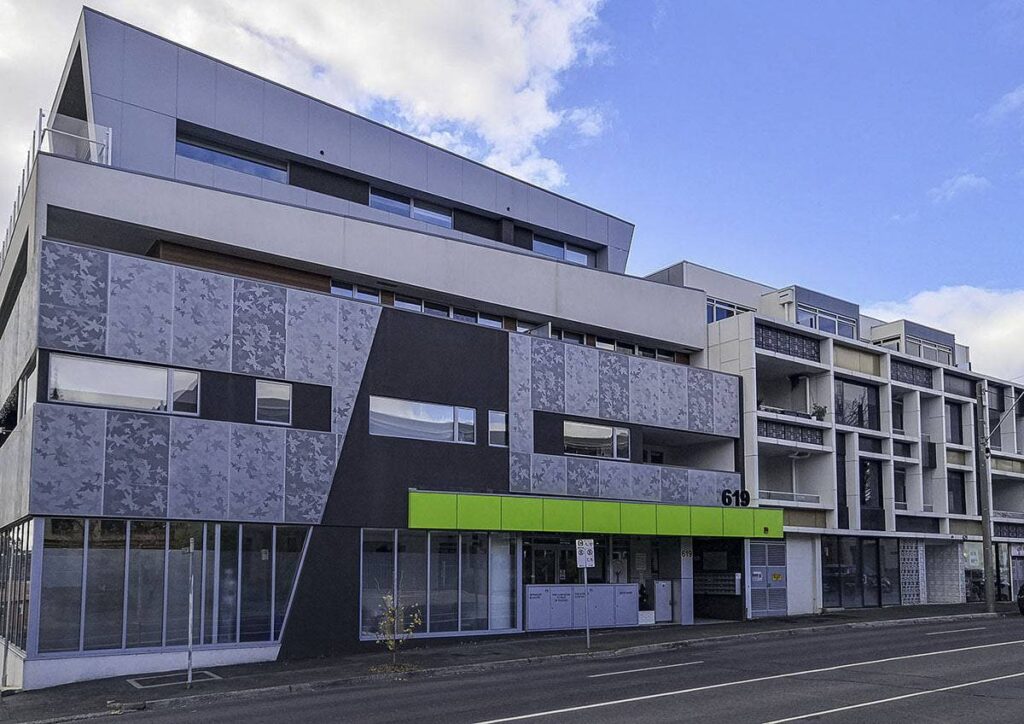THE GOLD STANDARD FOR BRAIN AND SPINE SURGERY
Neurosurgical Expertise and Innovative Technology for Superior Brain and Spine Surgery Results
Our practice specialises in cutting-edge future-minded treatment of conditions affecting the brain, spine, and peripheral nerves. We utilise safe minimally-invasive technologies and innovations dedicated to preserving, restoring, and improving the patient’s lifestyle. Dr. Ales Aliashkevich is a progressive and conservative neurosurgeon committed to providing the highest level of care and expertise in a dedicated, personalized way.
Dr Aliashkevich is qualified in using a variety of state-of-the art robotic and image-guided navigation systems, motion-preserving spine surgery and minimally invasive approaches. His expertise combined with advanced technology allows for performing keyhole procedures with a high level of precision, reducing the risk of complications and improving patient outcomes.
This approach provides many benefits for our patients, including:
– minimally-invasive access to the surgical area through small incisions and natural body corridors,
– increased accuracy with the preservation of vital structures,
– reduced surgery time and streamlined surgical process,
– faster recovery times and fewer complications,
– earlier return to normal activities.
NEUROSURGEON WHO BELIEVES THAT LESS IS MORE
Why Minimally-Invasive Surgery?
The ultimate goal of any neurosurgeon and spine surgeon is to improve the patient’s quality and even length of life by providing good recommendations regarding available treatment options. In the most advanced pathologies of the brain, spinal cord or spine, surgery is required to restore normal anatomical relationships between bodily structures.
The evolution of surgery and anaesthesiology allowed for achieving this goal and successfully managing previously untreatable conditions. However, there is still a lot of space for improvement, in particular in the field of brain and spine surgery. For example, the long-term outcomes after operations on most invasive brain tumors or severe degenerative spinal conditions still leave much to be desired. Studies investigating patient satisfaction after spine surgeries show that the rate of negative outcomes could be as high as 50%. Improvement of surgery results is not possible without further development of less invasive but more efficient operative techniques.
Minimally invasive procedures represent a logical evolution of surgical philosophy focusing on patient safety and satisfaction. The surgical philosophy of Dr. Aliashkevich is based on three main principles:
– accurate identification of the problem;
– safe access to the pathological area with minimal injury to the surrounding tissues;
– effective but delicate repair of complex structures even if they are located deeply in the body.
Dr Aliashkevich believes that the crucial goal of a neurosurgeon and spine surgeon is to avoid complex surgery whenever possible and to consider the least aggressive treatment options as the primary choice.
KEYHOLE APPROACHES
When Less is More
The treatment options for brain and spine problems usually include conservative and interventional strategies. Neurosurgeons usually consider non-surgical strategy first. When any surgery comes into question, it should be performed in the least disruptive and less invasive way.
The term ‘minimally invasive surgery’ is often used as a synonym for ‘keyhole surgery’ emphasizing the small size of skin incisions. There is a lot of work hidden underneath the small scar:
– MIS requires many years of surgical training and continuous professional education. Like any other field of medicine, it requires full dedication and a lot of responsibility.
– MIS relies on specially designed devices, retractors, sophisticated optical tools, illumination and surgical instruments allowing full control of the operative field through a microscope or endoscope.
– MIS involves detailed preoperative investigations and often employs computer-assisted image guidance and robotic technologies to achieve needed accuracy.
Minimally invasive procedures represent a logical evolution of surgical philosophy focusing on patient safety and satisfaction. This philosophy is based on three main principles:
– accurate identification of the problem;
– safe access to the pathological area with minimal injury to the surrounding tissues;
– effective but delicate repair of complex even deep-lying structures.
CHRONIC NECK AND BACK PAIN
Cervical and Lumbar Arthroplasty (Artificial Disc Replacement)
Natural aging of the disc (degeneration) or trauma can affect its mobility and cause a reduction of its cushioning function. It may manifest in pressure on the neural structures and result in neck, back, arm, shoulder, hip, leg and foot pain, numbness or weakness. Disc replacement (arthroplasty) is aimed at restoring the shock-absorbing function of the affected segment with simultaneous decompression of the neural structures. Similar to the well-established hip and knee joint replacement procedures, the evolution of artificial disc prostheses may also result in a dramatic improvement in patients’ quality of life and achieve high levels of patient satisfaction.
Neurosurgeons aim to relieve the patient’s neck or back pain initially by conservative strategies. Surgery is usually taken into consideration only as the very last resort to manage chronic and intractable pain or neurological deficit. Although disc fusion and replacement are similar in surgical approach, technique and initial results, the difference becomes more obvious over time, in particular after more than five years. Arthroplasty preserves motion and reduces the load on the discs above and below protecting them against accelerated degeneration. Multiple investigations have shown superior patient outcomes, higher patient satisfaction rates, reduced rate of re-operations, fewer complications and reduced costs after arthroplasty when compared with spinal fusion in properly selected candidates.
KEYHOLE NON-INVASIVE APPROACHES
Image-Guided and Robotic Surgery
Image-guided and robotic surgery allows accurate planning of the procedure before the patient enters the operating theatre. It can often be performed in difficult clinical scenarios when open surgery is deemed too risky, e.g. in elderly, obese or medically unfit patients. It causes less operative trauma and blood loss, resulting in reduced postoperative pain and scarring.
It helps to achieve faster recovery from surgery(neurosurgeon and spine surgeon) by:
– better quality of treatment, including improved accuracy of screw placement,
– improved outcomes,
– decreased incision size with better cosmetic results,
– reduced risk of infection and wound healing problems,
– reduced risk of medical complications, e.g. chest infections and deep venous thrombosis,
– reduced radiation exposure to the patient and operating theatre staff,
– increased safety and avoidance of critical structures during the approach,
– shorter operation time,
– diminished reliance on pain medications after surgery,
– faster postoperative recovery,
– earlier and more efficient physiotherapy and rehabilitation,
– faster return to normal activities and work,
– shorter hospital stay,
– the reduced overall cost of treatment.
Appointments
After taking your history and performing examinations, your imaging will be reviewed and discussed with you. Understanding the problem is essential in finding the best possible solution and good quality radiological investigations play an important role in visualizing any structural changes and abnormalities. Apart from clinical examination and patient symptoms, neurosurgeons rely on accurate radiological and neurophysiological tests for accurate diagnosis of neck pain, back pain and brain pathologies.
Very often, additional and more detailed radiological investigations will be required. These may include:
– MRI (magnetic resonance imaging) including weight-bearing scans and MR angiography,
– CT (computed tomography),
– SPECT (single-photon emission computed tomography),
– flexion/extension, lateral bending and other specific types of X-Rays,
– EOS imaging (low dose 3D imaging in natural standing position),
– DEXA bone mineral density measurements,
– ultrasound and other studies.
For certain neurological conditions, you may be referred to neurophysiological investigations, including nerve conduction studies, EMG (electromyogram), SSEP (somatosensory evoked potentials) and MEP (motor evoked potentials). click below to appointment with our expert neurosurgeon and spine surgeon.

Treatment Decisions
Conservative Treatment Always First
Our primary goal would be to avoid operation and to focus on other available strategies. This approach is proven as the safest and most effective in many scenarios. However, there are situations when surgery is the final and necessary step to improve a patient’s condition and quality of life. Intervention may be the only reasonable solution if an acute or disabling neurological problem is present. Having hesitation about brain or spine surgery is natural, and understanding the problem and range of available alternatives is very helpful before making this important decision. Building trust and reliable communication with your surgeon is essential for successful treatment. Most of our patients are happy with this conservative approach and very satisfied with the results of carefully chosen minimalistic operation.
Obtaining a second opinion is always a good step in case of any doubts or uncertainties. Your wish to consult another specialist will be encouraged and supported. We maintain good collegial relationships with other doctors and medical groups and can always provide copies of our medical records to them upon your request. Peer review is a crucial factor in avoiding unnecessary surgery and minimising risks. We strive to work together as a team to achieve the best possible results and to represent your best interest as our patient.
Feedback and Complaints
We value all feedback from our patients and customers.
Dr Aliashkevich and his team are committed to the delivery of excellence by adhering to the highest customer service standards. Whether you are providing feedback, paying a compliment or making a complaint, your input is the key to improving our products and services. Your feedback helps us maintain a high standard of service and ensures that our products and services match your needs. If you would like to provide some feedback or make a suggestion about how we can improve our service, please let us know.
Paying a compliment
Any neurosurgeon or spine surgeon strives to provide exceptional service to all patients. Dr Aliashkevich and his staff members are proud to be at the top of ranking websites, such as Google, RateMD etc. We appreciate receiving positive feedback from the patients, in particular knowing about their background of chronic pain, depression, and diminished quality of life.
Making a complaint
If you have encountered a problem with our service, or if you have any concerns about a procedure or neurosurgical treatment, we would like to hear from you. We will investigate any complaint, answer your questions and do everything we can to regain your confidence in us.
Dr Aliashkevich has established a process for dealing with complaints that satisfy our obligations under the AHPRA guidelines and medical legislation. You can tell us about your concerns either by telephone, e-mail, fax or letter. Dr Aliashkevich’s office would prefer the complaint to be made in writing, by either letter, facsimile or e-mail, as this helps to reduce the risk of misinterpretation or misunderstanding from our end. To help us assist you with your concerns, we ask that you:
– gather all the supporting documents relevant to the complaint;
– think about the questions you would like us to answer; and
– tell us what you think would be a reasonable response to your complaint.




Consulting Locations
Our main office is based in direct proximity to the Surrey Hills train station with plenty of on-street parking available:
miNEURO Consulting Suites
Suite 4, Ground Floor, 619 Canterbury Road
SURREY HILLS VIC 3127
Please call us on 03 90084200 and we will coordinate an appointment at the location most convenient and accessible for you.

